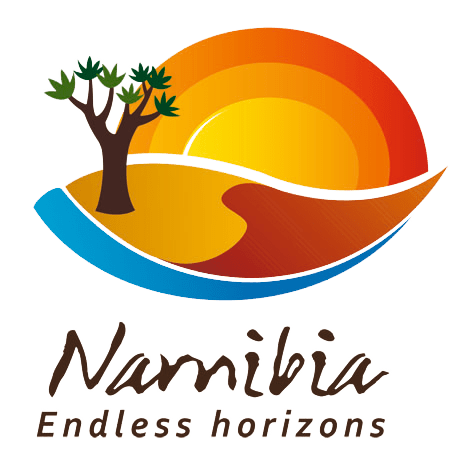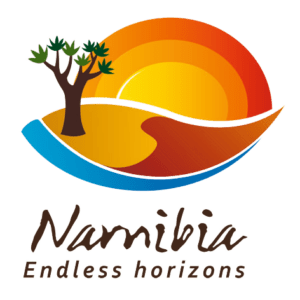Health
Medical Services
Vaccinations
There are no mandatory vaccinations for travellers from Europe. However, if you arrive from a country where yellow fever vaccinations are mandatory, proof of immunization is required. Take the usual precautions: ask your doctor whether you should renew your vaccinations against polio, diphtheria and tetanus. It also may be advisable to take precautions against Hepatitis A and B. Unfortunately, there is no vaccination against malaria.
Covid
Namibia is an ideal travel destination post covid. Wide-open spaces, warm weather and the second least densely populated country in the world make Namibia an ideal safari destination.
Current requirements for entry into Namibia are as follows:
All COVID-19 related entry requirements into Namibia has been removed. Visitors entering into Namibia no longer required to present a vaccination certificate or a negative PCR test upon arrival in Namibia.
Malaria
Malaria remains one of the most feared illnesses worldwide. In southern Africa, malaria is second to HIV/AIDS in causing illness and death. Namibia is mainly malaria-free. However, this does not apply to the northern and north-eastern parts (the risk is highest between November and April). Nevertheless, tourists can protect themselves efficiently with a bit of planning and extra caution. Please refer to ‘Tips for keeping mosquitoes at a distance‘ below.
Malaria is transmitted through the bite of a female Anopheles mosquito, which has previously bitten a person infected with malaria. If there are no mosquitoes, there is no malaria either. Please note that where there are mosquitoes, there is not necessarily malaria.
Since Namibia does not have much stagnant water, contracting malaria is minimal in most parts of the country.
Kaokoveld, Etosha National Park, the Otavi Mountains and the east, including Bushmanland, are areas of medium risk. Precautions are strongly recommended during the rainy season (November to April). During the winter months in these areas, there is no risk of malaria.
The risk is small in the area between Otjiwarongo and Windhoek. This does not mean, however, that you should not use mosquito repellent.
The coast, the Namib Desert and the south are regarded as almost risk-free.
Symptoms
The characteristic symptoms of malaria are similar to diarrhoea or flu: high fever with shivering fits, headache and aching limbs, severe sweating and dizziness. Malaria can certainly be treated if recognised early, but without treatment, it can become life-threatening. Incubation for the disease is four to six weeks. Should you experience cold-like symptoms during this period, see a doctor immediately.
Precautions
Although there is no vaccine against malaria, several prophylactic medicines are available, including homeopathic ones. In most European countries, malaria prophylaxis is available on prescription only, but in Namibia, they are sold over the counter and often cost less than overseas. Usually, it would be best to start taking the tablets one week before travelling to a malaria area and continue for four weeks afterwards. However, you should still see a doctor without delay if you notice any symptoms despite taking precautions. Some malaria tablets cause nausea, illusions and upset stomachs, while others have minor side effects. With this in mind, many people discard prophylaxis and rely on the most effective protection, avoiding mosquito bites altogether.
Tips for keeping mosquitoes at a distance.
- Always use repellent, especially in the evening, at night and in the morning. Effective repellents like ‘Peaceful Sleep’ and ‘Tabard’ are widely available in Namibia.
- At dusk and during the night, wear light-coloured clothes that cover arms and legs.
- Use insect sprays or repellent incense sticks and spirals in your room. These are available in supermarkets and pharmacies.
- If you are in a high-risk area, sleep under a mosquito net fixed above your bed.
- If you sleep in a tent, ensure that the flap and windows are fitted with mosquito gauze.
- If you need a mosquito net, purchase one. They are available at most NamPost branches and safari outfitters, and they are sold directly by ‘Mossi Nets’ in Otavi.
Portable Water
The quality of tap water is excellent in most places, although the taste may vary. You might want to use bottled water for making coffee and tea. Water from the boreholes of farms and lodges usually has a wonderfully pure taste. However, water from stagnant bodies should always be boiled or treated with purifying tablets, such as Puritans. Water can generally be drunk in Namibia unless otherwise stated. If you are planning a self-drive holiday in Namibia, always ensure that you have plenty of water in your vehicle.
Water is a very scarce commodity in Namibia – please always use it sparingly.
Snakes & Scorpions
Most visitors never see a snake or scorpion during their stay in Namibia. In any event, about 75% of Namibia’s snakes are not poisonous. Most snakes beat a hasty retreat when humans approach and therefore are never spotted. The lazy Puff Adder may become dangerous, as it cannot move away fast enough, and you might unwittingly get too close.
When walking in the “wilds”, you should always wear sturdy shoes, preferably covering the ankle. Watch your step and listen to sounds snakes usually warn you before they attack. Refrain from picking up or turning pieces of rock, and do not put your hand into holes in the ground or into rock crevices, as these are favourite hiding places for snakes and scorpions. Always carry a torch in the dark. When camping, zip your tent entirely and shake out your shoes before putting them on in the morning.
Stomach & Bowels
Stomach upsets are quite common when travelling internationally. Diarrhoea is a reaction to unfamiliar bacteria in your intestines. Climate change can also play a role. Make sure that you have a remedy for diarrhoea in your first-aid kit. In general, fresh produce is sprayed and washed or otherwise pre-treated and can be enjoyed without hesitation. It’s recommended to avoid a high meat diet while travelling.
Other Illnesses
Worms transmit bilharzia. They occur only in stagnant water in some places in the north-eastern Kavango Region and the Kwando-Linyanti-System.
Sleeping Sickness is transmitted by the Tsetse Fly, which resembles a horsefly. This Sickness occasionally occurs in the Caprivi.
All warm-blooded animals can transmit rabies. So be careful if untamed wild animals (like ground squirrels) behave very friendly.
Ticks transmit tick fever and meningitis. Visitors usually encounter them only when in close contact with cattle, game or dogs or when spending time in sandy riverbeds. Both illnesses occur very seldom.
Medicines & Pharmacies
Namibian pharmacies are available in the bigger towns in Namibia. Most pharmacists are available to give sound advice. Many types of medicines are available without prescription and cost less than in Europe or North America. Stock up on your supply of medication in time, as only the larger towns have pharmacies. Some pharmacies have extended hours, and some run emergency services. Contact the local hospital in emergencies during weekends and after hours.
Doctors & Hospitals
Medical care in towns and cities is excellent, especially in the capital city, Windhoek. There are several private clinics, which maintain international standards. In addition, most remote towns have a modest hospital or first-aid clinic. Alternatively, ask your accommodation establishment for recommendations. Since Namibia is scarcely populated and the distances between towns and villages are vast, bear in mind that it may take the majority of a day to reach a doctor or a hospital in some places.
Stored Blood
Namibia’s Blood Transfusion Service only uses blood donations by unpaid volunteers. Donations are thoroughly tested for transmittable diseases, including HIV. Tests are carried out according to internationally recognized standard methods and are regularly submitted to strict quality controls.
Insurance
It is advisable to carry foreign travel health insurance that includes coverage for repatriation. Tour operators and other organizations offer such insurance, such as credit card companies or automobile associations. When signing for insurance, ensure the costs for emergency flights within Namibia are covered and preferably settled directly. Depending on the distance, the cost of air rescue service can quickly amount to several thousand Namibia Dollars, which you may be required to pay immediately in cash or by credit card.
Foreign visitors can also take out travel insurance directly in Namibia. It covers air rescue within the country.


